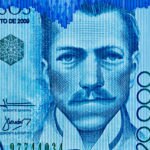The Colombian economy shows signs of an orderly adjustment
GDP expected to grow at about 2% in a scenario marked by lower oil prices and a complex international context for the country’s investments and exports. Growth in 2016 will be driven by expansions in the petrochemical industry, imports and the services and construction sectors.

In 2016, the Colombian economy’s gradual growth rate adjustment and moderation process is set to continue. The slowdown will be explained by lower oil prices and a complex international context for the country’s investments and exports. All things considered, the GDP is expected to grow at about 2%. However, and despite the challenging environment, the economy is showing signs of an orderly adjustment.
In this slowdown context, household expenditure is expected to grow in 2016 below 2015 levels, due to the lower demand for durable (such as vehicles) and semi-durable (such as clothing and furniture) goods. Also, higher interest rates after the Bank of the Republic’s intervention rate rise and lower household confidence will drag down demand for consumer goods. Public consumption will grow at a low rate in 2016 as a result of the budgetary restrictions recognized by the Government in the 2016 expenditure plan and lower budget execution rates by regional institutions at the beginning of the new executive period.
"Household expenditure is expected to grow in 2016 below 2015 levels, due to the lower demand for durable (such as vehicles) and semi-durable (such as clothing and furniture) goods
On a sectorial basis, growth in 2016 will be bolstered by the expansion of the petrochemical industry, of the sectors that compete with imports and the services sector. Construction, just as in 2015, will contribute positively to growth, but this time marked more by housing projects for median income population than by civil projects.
Economic policy faces major challenges
On the inflation front, shock in food prices and the transfer of the depreciation to inflation will lead to a slower convergence of inflation. In this context, we expect to see additional growth in the monetary policy’s interest rate, intended to keep the monetary policy’s level of credibility and achieve convergence of inflation towards its goal.
As regards fiscal policy, the discussion regarding a structural tax reform and the need of the Government to replace the lower oil income and taxes maturing in the coming years will become one of the core topics in economic policy discussions.
Oil prices, uncertainty over the dynamic of Chinese economy, and high deficit levels in the current account will continue affecting the foreign exchange rate. We still expect external elements to act as key determining factors of both the exchange rate itself and its volatility. However, it is important to indicate that we still consider FX flexibility to be an adequate policy, which manages to partially mitigate the external shock, generating favorable expectations for those sectors competing against imports this year.
"Oil prices, uncertainty over the dynamic of Chinese economy, and high deficit levels in the current account will continue affecting the foreign exchange rate
In 2017 the economy will consolidate its recovery process
For 2017 we expect the economic activity in the country to increase its growth rate, with expansions in all components of demand, but mainly driven by fixed investments. After two years of economic moderation, the country will little by little manage to go back to a healthy expansion path. However, in this context of recovery and normalization of the macroeconomic scenario, there will still be several challenges that will need to be monitored, including the adjustment of foreign accounts, tax figures, and convergence of inflation toward the inflation goal.
José Vicente Romero is senior economist in BBVA Research Colombia.